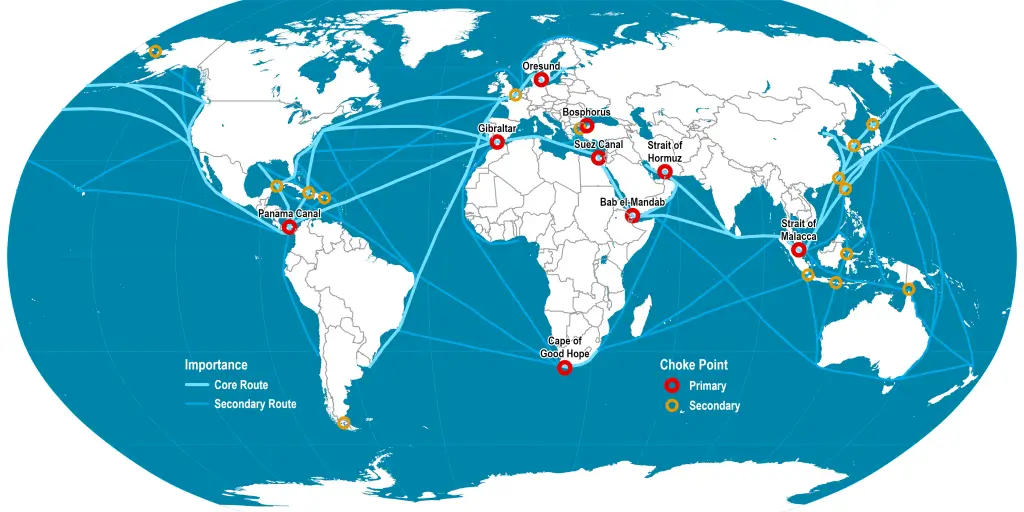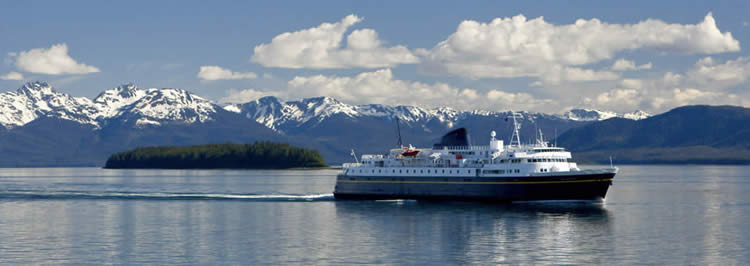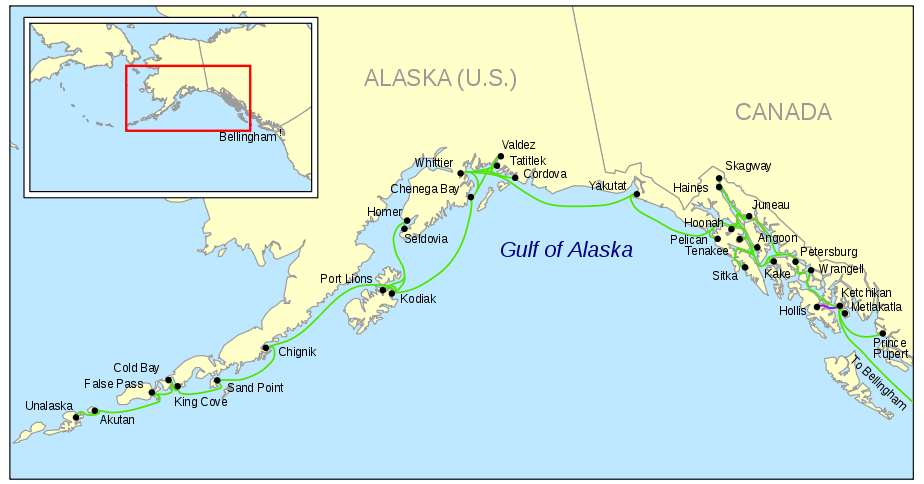The Importance of Marine Highways, MARAD Designates New Marine Highway in Alaska and Pennsylvania in U.S.

In an era marked by rapidly growing populations, urbanization, and increased trade, finding innovative and sustainable transportation solutions is crucial. One such solution that has gained significant attention is the concept of “marine highways.” These water-based transportation routes hold the potential to address multiple challenges simultaneously, ranging from congested roadways to environmental concerns. In this article, we will delve into the importance of marine highways, exploring their benefits, specific details, and the role they play in shaping a more efficient and eco-friendly transportation network.
Defining Marine Highways
Marine highways, often referred to as “blue highways” or “waterborne corridors,” involve the utilization of inland and coastal waterways for freight transportation. These water routes serve as an alternative to traditional road and rail transportation methods. Just as highways on land facilitate the movement of goods and people, marine highways provide a similar function on water, linking key ports and terminals.
Benefits of Marine Highways
- Reduced Congestion: One of the primary advantages of marine highways is their potential to alleviate road congestion. As urban areas continue to expand, roadways often become clogged with traffic, leading to increased travel times, pollution, and stress. By diverting freight traffic onto waterways, marine highways can help relieve this congestion, making road travel smoother for both commercial and private vehicles.
- Environmental Sustainability: In an age of growing environmental awareness, marine highways offer a more eco-friendly mode of transportation. Shipping by water produces fewer emissions compared to road or air transportation, contributing to reduced carbon footprints and improved air quality. Additionally, utilizing waterways minimizes the need for large-scale land development and the associated habitat destruction.
- Energy Efficiency: Ships are inherently more energy-efficient than trucks or trains when it comes to transporting goods over long distances. Water transportation requires less energy per ton-mile, making it a cost-effective solution for large-scale freight movement. This energy efficiency translates to lower operational costs and potentially reduced prices for consumers.
- Economic Growth: Marine highways can stimulate economic growth by bolstering regional trade and commerce. Ports that are connected by efficient waterborne corridors can experience increased trade volumes, attracting businesses, creating job opportunities, and boosting local economies. Moreover, by reducing transportation costs, marine highways contribute to a more competitive market environment.
- Resilience and Redundancy: Marine highways can play a crucial role in building resilient transportation networks. In the face of natural disasters, accidents, or infrastructure failures, waterways can serve as alternative routes, ensuring a continuous flow of goods even when other transportation modes are disrupted.

Several successful marine highway projects and initiatives around the world highlight the practicality and potential of this mode of transportation.
- American Marine Highways: In the United States, several marine highway routes have been established or proposed. For instance, the Marine Highway Program supports the development of routes along the East Coast, Gulf Coast, and Pacific Northwest. The New York Harbor to Florida route, known as the “Atlantic Coast Marine Highway,” connects multiple ports and provides an alternative to congested roadways.
- European Short Sea Shipping: Europe has been a pioneer in promoting short sea shipping as an alternative to road transportation. The European Union’s Motorways of the Sea initiative aims to enhance maritime connections between different regions, reducing road congestion and environmental impact.
- Asian Marine Highways: In Asia, countries like Japan have embraced marine highways to improve connectivity between their islands. For instance, Japan has established routes connecting its main islands, such as the Seto Inland Sea route, which alleviates the burden on road and rail systems.
New marine highway routes
As part of the United States Marine Highway Program (MHP), the U.S. Maritime Administration has announced the identification of two additional Marine Highway Routes, expanding the system by 6,500 miles in Alaska and almost 250 miles along the Ohio River.
The new designations were announced by U.S. Transportation Secretary Pete Buttigieg in Alaska. Marine highways are vital links in our supply chains, helping to move goods quickly, cleanly, and efficiently,” said Secretary Buttigieg. “By expanding our marine highway system, we can strengthen our supply chains, improve port operations, and help keep goods affordable.

The M-11 Marine Highway Route Alaska
The M-11 Marine Highway Route (Alaska), supported by the Alaska Department of Transportation and Public Facilities, will connect coastal and river ports in southwestern and northern Alaska by extending the marine highway network by more than 6,500 miles. This will improve mobility in areas that rely on a network of ports, rivers, barge landings, and airports to transfer people and products, giving residents more options for watery transit.
The M-79 Marine Highway Route Pennsylvania and West Virginia
The Port of Pittsburgh and the Morgantown Monongalia Metropolitan Planning Organization are the co-sponsors of the M-79 Marine Highway Route (Pennsylvania and West Virginia), which extends the Ohio River system’s reach by nearly 250 miles. This route offers local businesses a dependable and affordable alternative to surface transportation and acts as a catalyst for increased operations, infrastructure investments, and freight movement.

Conclusion
As we navigate the challenges of a rapidly changing world, finding sustainable transportation solutions is paramount. Marine highways present a promising avenue to address multiple concerns simultaneously – from congestion and pollution to economic growth and resilience. By utilizing the vast network of waterways available, we can unlock a more efficient, cost-effective, and environmentally friendly mode of freight transportation. With successful examples from around the globe, marine highways offer a blueprint for building a more connected, prosperous, and sustainable future.
Click here to join our Telegram chanel
You will get information, news, and support related to Merchant Navy.
